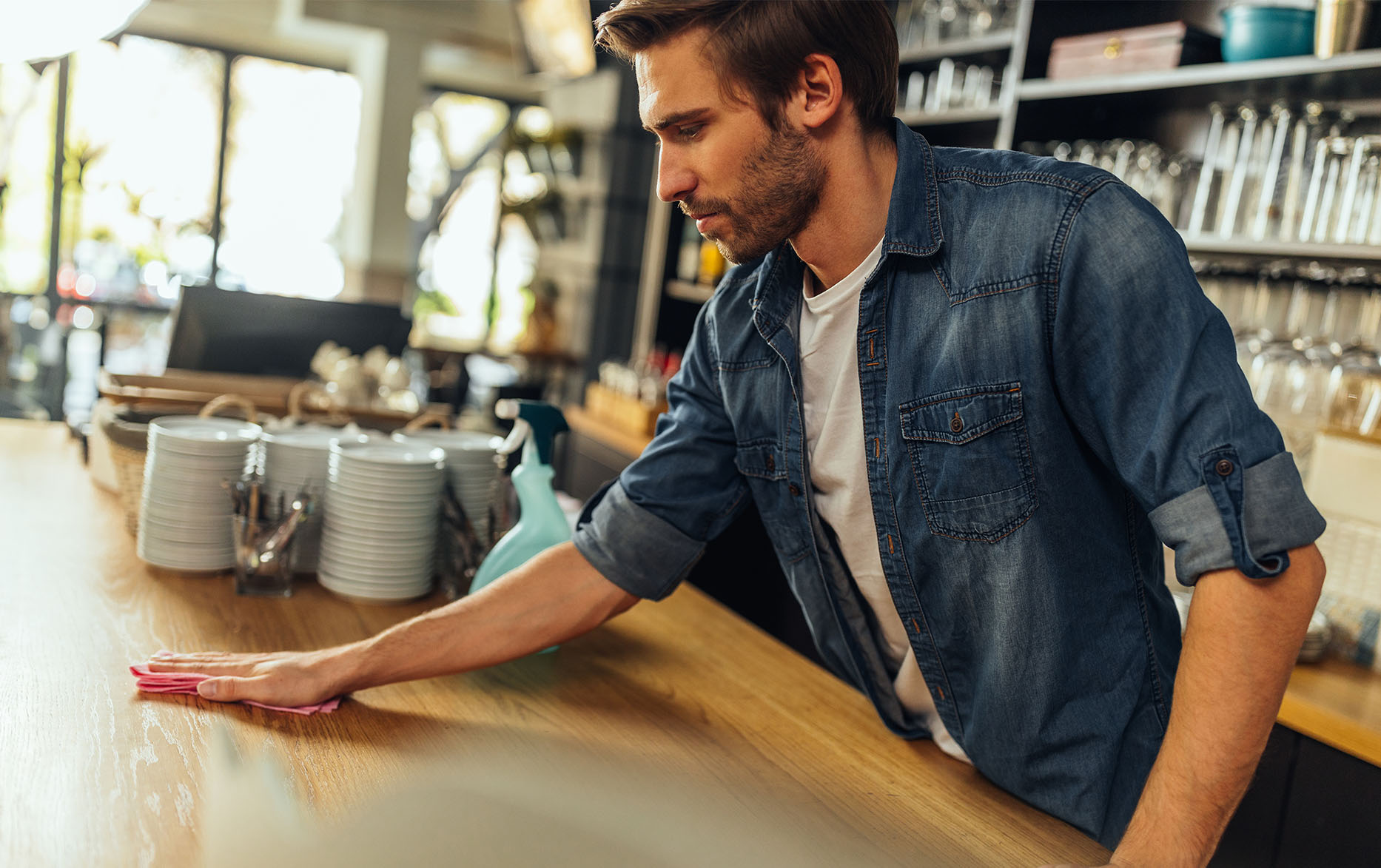

Are you killing illness-causing germs, or just spreading them around?
You likely have a few cleaning products and disinfectants under the sink. Without looking at their back labels, do you know how much time each product requires to do what it claims?
We often believe that simply applying a disinfectant product and wiping it off will get the job done, eliminating harmful bacteria after activities like cutting raw chicken or simply cleaning door handles and knobs during cold and flu season. But disinfectants are often misused, resulting in dangerous bacterial growth such as E.Coli, Salmonella and more. And if you're only using wipes, you and your family may be facing even more health risks.
Most cleaners don't disinfect, and most disinfectants don't clean.
Understanding the distinction between cleaning, sanitizing and disinfecting is important. While cleaning refers to the physical or mechanical removal of dirt and grime, as well as a portion of the germs on a given surface, sanitizing means reducing germ colonies down to a less dangerous level. Disinfecting means to kill all applicable bacteria and viruses on a surface to an EPA-designated extremely low tolerance.
Handling raw meat? Got a little one in diapers, or a family member with the flu? If you're dealing with potentially harmful bacteria and viruses, you'll need to disinfect the surfaces, not just clean them.
Kill time is critical
All disinfecting products need to stay wet on the surface for a specific length of time to kill all bacteria and viruses. This is referred to as "kill time" and/or "contact time." While disinfecting wipes seem convenient, getting them to do their intended job is tougher than you'd expect. They're often used incorrectly, making them far less useful than one might think in the fight against illness-causing bacteria.
The kill time of a disinfectant varies by product, and can always be found on the product label. Disinfectant wipes typically instruct you to leave the cleaning surface visibly wet for 4-10 minutes, in order to eliminate dangerous illness-causing bacteria including Staph, E. Coli, Salmonella, MRSA, Norovirus, cold, flu and more.
Remember, disinfectants only work while wet. If a disinfectant dries quickly, EPA regulations (and, often, the product's label) dictate that it must be reapplied until the total kill time is reached.
Disinfectant products can often have a high alcohol content, used to kill bacteria and viruses by breaking down cell proteins. However, alcohol can also cause the liquid to evaporate quickly, making it ineffective if it dries before the kill time is met. Bleach is also popular in wipes, killing bacteria through oxidation of cells. But both bleach and alcohol can damage and discolor certain surfaces.
How often do you stand and wait to ensure your wiped surfaces stay wet? Do you have all afternoon to reapply wipes to each surface you're cleaning to ensure that it remains wet for several minutes? If it dries before the kill time is met, then you haven't fully disinfected. Illness and disease-causing pathogens could still be there.
Your best line of illness defense: effective cleaning, sanitizing & disinfecting
As an alternative to wipes, a disinfectant spray cleaner may offer the better option. It can apply more liquid to the surface, and as a result is more likely to leave a surface wet for the required time than a wipe, without the need for reapplication. It also allows you to reach crack and crevice areas that wipes can't penetrate.
Learn about Simple Green disinfectant products here.
Did you know? The word "désinfecter" originated in France in the late 1500s, when medicine began using surface chemistry to combat the spread of disease caused by harmful biological organisms outside of the human body - the birth of disinfectants.
FEATURED ARTICLES